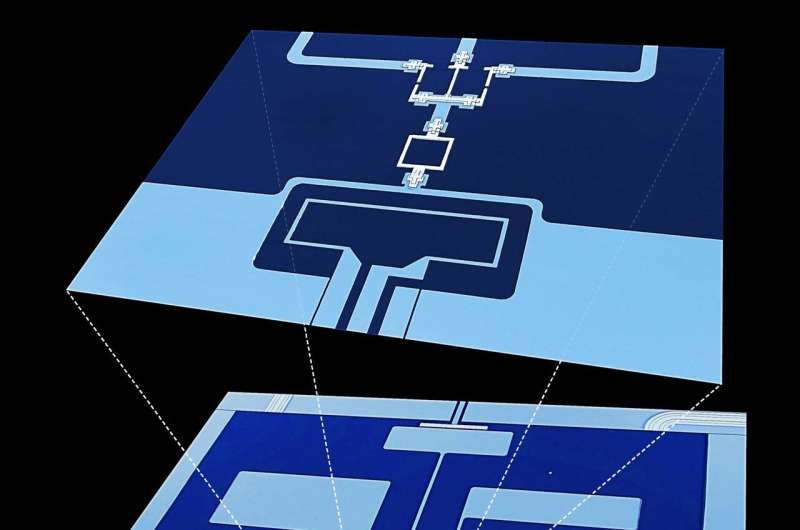Science Daily June 26, 2023
Qubits in cavity quantum electrodynamic (QED) architectures are often operated in the dispersive regime, in which the operating frequency of the cavity depends on the energy state of the qubit, and vice versa. The ability to tune these dispersive shifts provides additional options for performing either quantum measurements or logical manipulations. A team of researchers in the US (NIST- Boulder,CO, UMass Amherst, UMass Lowell, Raytheon, MA) coupled two transmon qubits to a lumped-element cavity through a shared superconducting quantum interference device (SQUID). The design balanced the mutual capacitive and inductive circuit components so that both qubits were statically decoupled from the cavity with low flux sensitivity, offering protection from decoherence processes. Parametric driving of the SQUID flux enabled independent, dynamical tuning of each qubit’s interaction with the cavity. They demonstrated the pulsed parametric dispersive readout of both qubits. The dispersive frequency shifts of the cavity mode followed the theoretically expected magnitude and sign. According to the researchers their parametric approach creates an extensible, tunable cavity QED framework with various applications, such as entanglement and error correction via multi-qubit parity readout, state and entanglement stabilization, and parametric logical gates… read more. TECHNICAL ARTICLE

This photo shows the central working region of the device… Credit: R. Simmonds / NIST